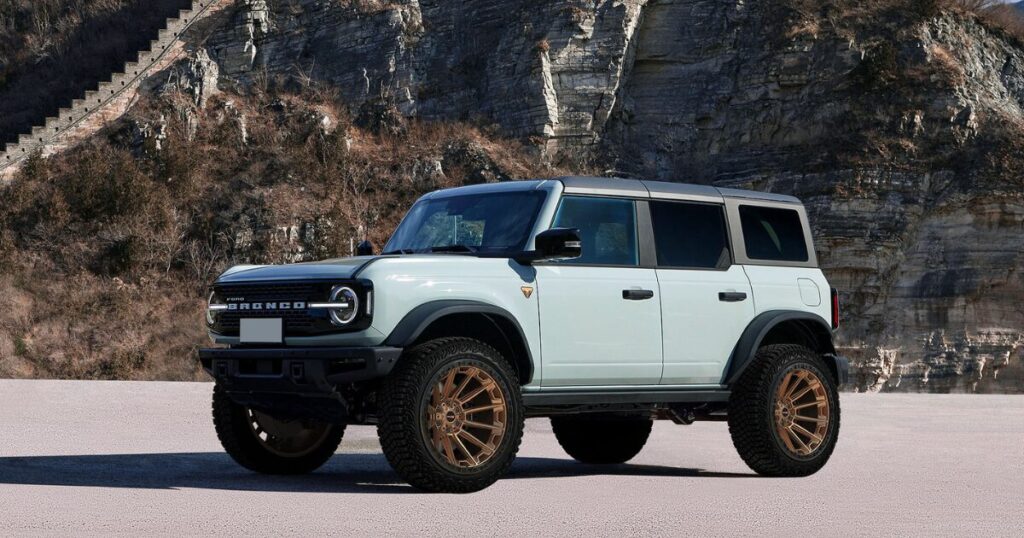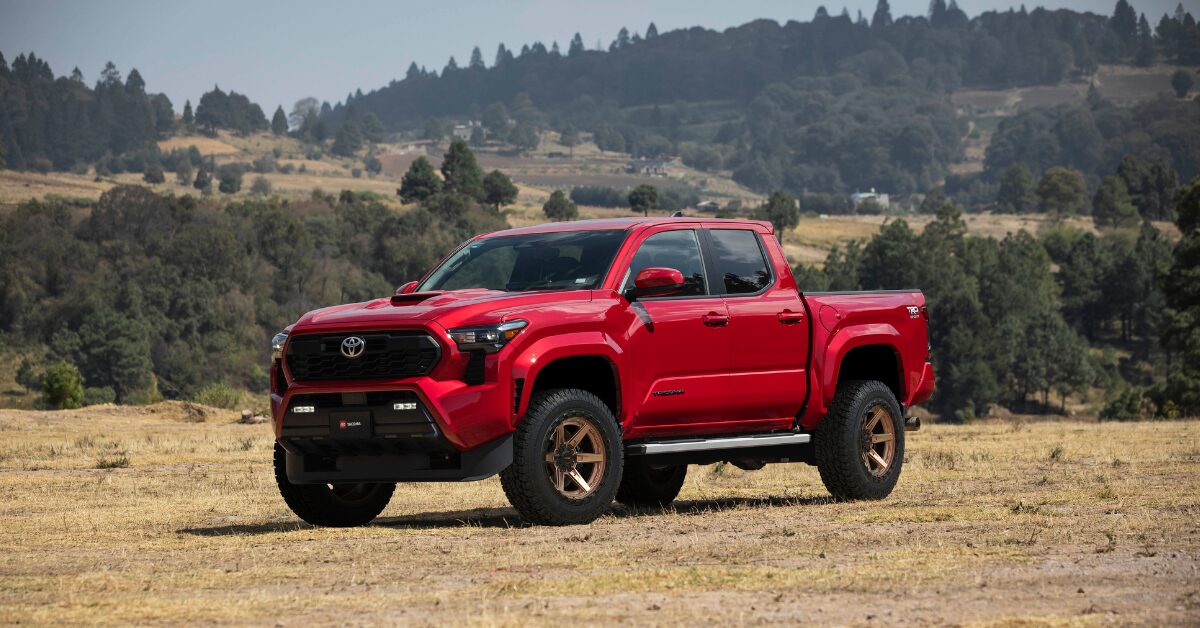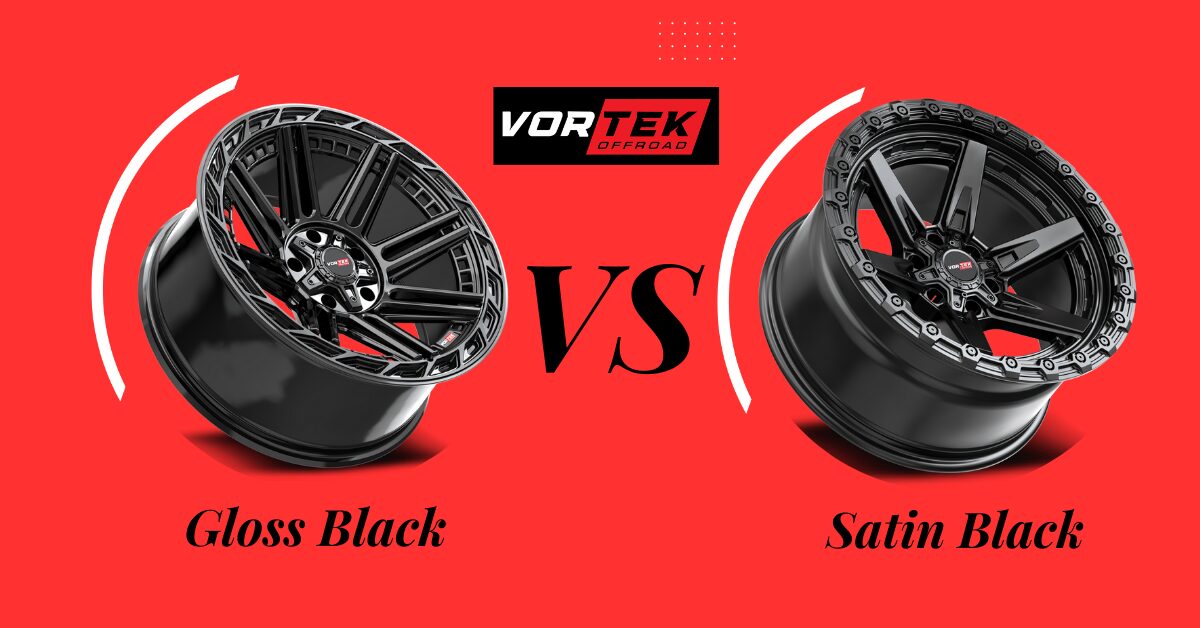Blog
Wheel Spacers Good or Bad for 4x4? The Truth Revealed!

Properly installed wheel spacers can make your ride more stable, improve tire fitment, and upgrade its look, but they need to be high-quality and well-maintained. Wheel spacers increase the distance between the hub and the wheel. They help improve weight distribution, enhance handling, and prevent tire rubbing issues when using bigger tires.
Wheel spacers are thick, durable discs that sit between your vehicle’s hub and the wheel. They push the wheels outward, creating more space and effectively widening your vehicle’s stance. This simple upgrade can be a game-changer for off-road cars, trucks, and SUVs, especially if you’re running larger tires or want better stability on and off the road.
Whether you’re tackling rough trails or just want a more aggressive look, Vortek Wheels offers a large number of wheel spacers that can make a big difference in your ride’s performance and appearance.
Why Wheel Spacers Are Good For 4×4 :
Adding wheel spacers to your 4×4 or truck isn’t just about looks. It’s a functional upgrade that can improve your ride in multiple ways. Whether you’re hitting the trails or just want a more aggressive stance, here’s why wheel spacers are worth considering.
1. Increased Stability and Handling
One of the biggest benefits of wheel spacers is that they widen your vehicle’s track, meaning your wheels sit further apart. This gives your ride better stability, especially on rough terrain, sharp turns, or uneven roads. A wider stance lowers the risk of rollovers, making it an excellent choice for off-roaders tackling rocky trails or steep inclines.
2. More Clearance for Bigger Tires
Love the look and performance of larger off-road tires but are struggling with clearance issues? Wheel spacers help by pushing the wheels outward, preventing them from rubbing against the fenders, control arms, or suspension components. This is especially useful if you’ve lifted your truck or SUV and want to fit chunkier, more aggressive tires.
3. Improved Cornering Performance
If you enjoy spirited driving or off-roading, wheel spacers can make a noticeable difference in how your vehicle handles corners. With a wider track, your wheels grip the road better, reducing understeer or oversteer. This means more confidence and control, whether you’re navigating winding roads or tackling uneven terrain.
4. A More Aggressive, Customized Look
Let’s be real – wheel spacers make your truck or SUV look badass. By pushing the wheels outward, they give your vehicle a more muscular, aggressive stance. If you’re running aftermarket wheels with a high offset, spacers can help align them perfectly with the fenders, creating that clean, flush look that turns heads on and off the road.
5. Better Compatibility with Aftermarket Wheels and Brakes
Sometimes, aftermarket wheels or brake kits don’t fit perfectly with your stock setup. Wheel spacers solve this problem by giving extra room for bigger brake calipers or correcting the wheel offset to ensure a proper fit. This means you don’t have to compromise on performance upgrades just because of fitment issues.
Are Wheel Spacers Safe For 4×4?
Yes, wheel spacers can be safe for your 4×4 only if you do it right! They’re a popular upgrade for off-roaders because they widen your stance, improve stability on rough terrain, and create room for bigger tires. But safety depends on two things: quality and proper installation.
Always choose high-quality spacers made from aircraft-grade aluminum or steel, and go for hub-centric designs that fit your vehicle perfectly. Cheap spacers can crack or fail, so don’t cut corners. During installation, use a torque wrench to tighten the lug nuts to the manufacturer’s specs.
Just remember, spacers add stress to your suspension and wheel bearings over time, so check them regularly for cracks, rust, or loose nuts. With the right care, they’re a great upgrade for your 4×4!
Legality of Wheel spacers in the U.S
Are wheel spacers legal in the U.S.? Yes, wheel spacers are legal in most states across the U.S. In most states, wheel spacers are legal as long as they’re installed correctly and don’t extend your wheels beyond the fenders. This is to prevent debris from being kicked up onto other vehicles, which can be a safety hazard.
A few states have specific rules about how far your tires can stick out from the fenders. For example, in Texas, tires can extend up to 3 inches beyond the fender, but in states like New York, any extension beyond the fender is illegal.
Pro Tip: Always check your local laws to ensure compliance. Generally, as long as they’re installed correctly and don’t extend your wheels beyond the fenders, you’re good to go.
Wheel Spacers Have Their Thorns Too
With all the benefits, wheel spacers aren’t free from the potential risk.
Advantages of wheel Spacers
- Better Stability: Spacers widen your vehicle’s track, making it more stable on uneven terrain or during sharp turns.
- Room for Bigger Tires: They create extra clearance, so you can fit those beefy off-road tires without rubbing.
- Aggressive Look: Spacers give your rig a wider, tougher stance that turns heads.
- Improved Handling: A wider base means better cornering and control, especially off-road.
- Cost-Effective: Cheaper than buying new wheels with the right offset.
Disadvantages of Wheel Spacers
- Added Stress: Spacers can put extra strain on your suspension and wheel bearings over time.
- Maintenance: They require regular checks for loose lug nuts, cracks, or rust.
- Vibration Risks: Poor-quality spacers or improper installation can cause vibrations or alignment issues.
- Legal Limits: Some states have rules about how far your tires can stick out, so check local laws.
- Wear and Tear: They may accelerate wear on suspension components if not installed correctly.
Cost Breakdown of Wheel Spacers
The price of wheel spacers varies based on material, thickness, type, and brand. Aluminum spacers are typically more affordable, ranging from $50 to $150 per set, while steel spacers, known for their durability, cost around $150 to $300+.
Thickness also impacts the price. Spacers under 1 inch usually cost between $50 to $100, while thicker 2-inch+ spacers range from $100 to $250 due to increased material use.
Hub-centric spacers, which offer a better fit and improved safety, tend to cost more ($80 to $250) compared to lug-centric spacers ($50 to $150)
Budget options exist for $30 to $80, but cheap spacers may compromise safety, durability, and performance. Investing in high-quality spacers ensures better handling, stability, and long-term reliability.
How to Safely Install Wheel Spacers
Installing wheel spacers is easy if you have the wheel spacer installation tools:
- Torque wrench (for tight, secure lug nuts)
- Lug nut socket (to remove those stubborn lug nuts)
- Jack and jack stands (safety first!)
- Hub-centric wheel spacers (trust me, go with these for the best fit)
- Thread locker (optional, but adds extra peace of mind)
Step-by-Step Installation Guide
- First, jack up your vehicle and secure it on jack stands. Ensure it’s on a flat surface to prevent shifting while you work. Safety is key!
- Loosen the lug nuts with your socket but don’t remove them completely. This makes it easier when lifting the car.
- Now, fully remove the lug nuts and take off the wheels. Set them aside.
- Clean the hub surface where the spacer will sit. Use a rag or wire brush to remove dirt or rust for a smooth fit.
- Check that your hub-centric spacer fits snugly and sits flush on the hub. If it fits perfectly, you’re good to go!
- Place the spacer on the hub, making sure it’s properly aligned and fits tightly. Hub-centric spacers are ideal for a secure fit.
- Reinstall the wheel, align it with the studs, and hand-tighten the lug nuts.
- Use a torque wrench to tighten the lug nuts to the manufacturer’s recommended specs. Tighten in a star pattern to ensure even pressure.
- After driving 50-100 miles, recheck the lug nuts. The spacers may settle, so make sure everything is still tight.
Wheel Spacer Maintenance Tips
Keeping your wheel spacers in good shape is easy and ensures a safe ride. Check them often for cracks, rust, or loose lug nuts, especially after off-roading. A quick look can prevent bigger issues later.
Keep them clean by wiping them down during tire rotations, as dirt and rust can mess with their fit. Tighten them correctly using a torque wrench too tight or too loose can cause problems.
If you feel vibrations or weird handling, check the spacers immediately. Don’t ignore warning signs! And if you’re unsure about installation, ask a pro to do it right. Taking care of your spacers means better performance, safety, and a smoother ride on and off the road!
Ended Note
Wheel spacers can be a great upgrade for many drivers. They help improve stability, make room for bigger tires, and give your vehicle a tougher look. But they’re not perfect. Cheap spacers or bad installation can cause problems like extra stress on your suspension, vibrations, or faster wear and tear.
If you’re thinking about wheel spacers, take your time to choose high-quality ones and make sure they’re installed correctly. Regular checks and maintenance will keep them working well. In the end, whether they’re worth it depends on what you need and how you drive. Choose smart, and they can be a solid upgrade for your ride!
FAQ
Answer: A correctly installed wheel spacer doesn’t affect the ride quality.
Answer: Absolutely! Wheel spacers can be a great addition to your off-road rig—but only if you do it right.
Answer: Although it says you could go faster, driving at 50 miles per hour is a safe speed in dry weather. In wet weather, it’s best to drive slower.











